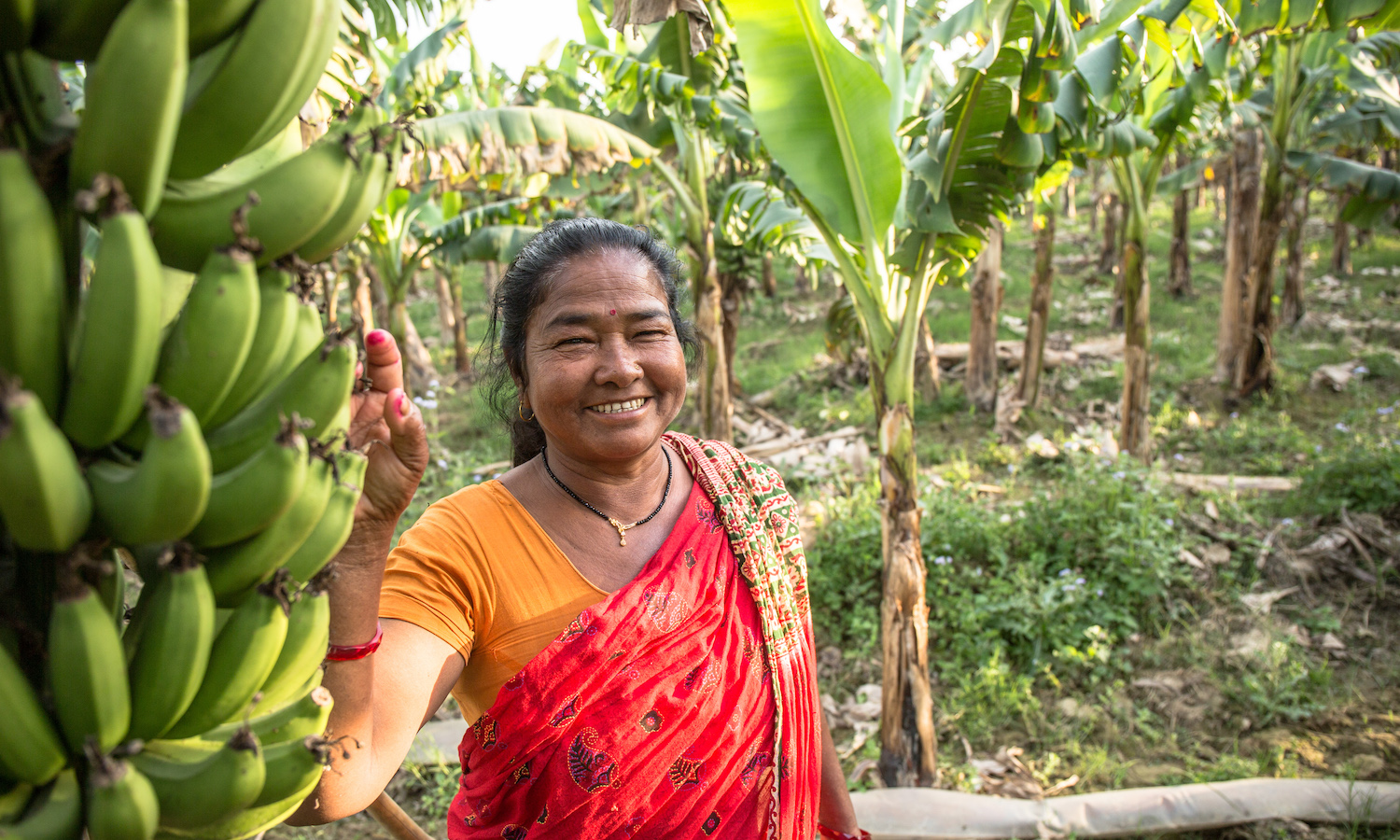Before she married at the age of 16, Jeet Kumari had received no formal education. As the years went by, it was difficult for her to survive off her small farm and send her four children to school. Unable to afford even basic health care, she lost her husband and one child to treatable illnesses. Still, she continued to farm, coaxing whatever food crops she could from the poor soil in her small corner of Nepal.
Smallholder farmers produce up to 80 percent of the food supply in Asian and sub-Saharan African countries, and women are crucial producers on those farms. They steward their animals and land with minimal resources, striving for sustainability, nutritious food, and financial security. It is an uphill battle, made worse by the combined impacts of climate change, conflict and a cost-of-living crisis that has plunged 828 million people across the world into chronic hunger.
This hunger crisis and rising rates of global poverty cannot be solved without the economic empowerment of women smallholder farmers—yet they are seldom the primary focus of development initiatives that aim to end poverty or improve food security.
In 2019-20, for example, 4 percent of Official Development Assistance from 31 of the world’s richest countries centered on gender equality and empowerment as its main objective—and only a fraction of that was dedicated to rural women. To be sure, a larger proportion (44 percent) went to programs that consider gender as part of a wider agenda. But such a general approach rarely addresses either the specific or systemic barriers confronting women smallholder farmers.
The barriers are high. Globally, women have equal economic rights to men in only 12 countries. Cultural and gender biases, discriminatory laws and regulations make it more difficult for women than men farmers to access secure land rights, technologies, financing and markets that could vastly improve their options and incomes.
In some cases, biases and disparities are widening. Studies have shown a growing acceptance of domestic violence since COVID-19 and an increased incidence of child marriage as families struggle to recover from devastating natural disasters. Indeed, by 2022, women had less food than men in every region in the world, with the gap expected to grow along with climate change.
It is simply not possible to achieve sustainable development without a primary focus on women; to achieve women’s economic empowerment without a focus on agriculture; or to end hunger and poverty without elevating women smallholder farmers.
Jeet is an example of the change that is possible. Today she is not only a respected farmer but has even donated land for use by her local women’s agricultural cooperative. Over the years, she received training in animal welfare, kitchen gardening, climate-smart agriculture, fodder and forage management, gender and group management.
Much of this training was offered through local partnerships catalyzed by Heifer International, a global development organization I lead that works to economically empower women smallholder farmers, their families, and their communities. Its programs promote an unshakable foundation of social capital—trust and mutual support built by the women through their collective farming enterprises.
Sustained by values of accountability, self-reliance and caring, women join together in self-help groups, receive training, access to capital and new market opportunities. As these groups grow in sophistication, they independently join together to form professional agricultural cooperatives with deeper market reach and livelihood-boosting resources for their members.
Heifer currently supports more than 250 cooperatives across 44 districts of Nepal, with more than 300,000 women actively engaged. They have also coalesced to form a national “apex” organization. It connects members to both markets and policymakers, advocating at the highest level of government for reforms that support farming as a business.
Using similar approaches in other parts of the world, women have gained greater agency over their farms, their finances and their futures.
In Nigeria, where 2.2 million women harvest shea nuts, collectives organized by the nonprofit Initiative for Gender Empowerment and Creativity have begun to eliminate the middlemen, engaging directly with buyers. A Climate Smart Shea Processing Facility enables the women to produce their own high-quality shea butter for global markets rather than selling the raw nuts for a minimal price.
In Burundi, the global nonprofit CARE found that investing in gender equality in agriculture brought a US$5 return for every US$1 invested, compared to a US$2 return for every US$1 invested in agriculture programs that ignored gender equality.
The U.N. Food and Agriculture Organization estimates that, were women farmers in developing countries given access to the same resources as male counterparts, the women could raise their output by 20-30 percent. The benefits would continue from there, as women invest up to 10 times more of their earnings than men do in family well-being, including child health and education.
These approaches lay a roadmap for how the international community can support the economic empowerment of smallholder women farmers. But achieving this goal will require long-term commitments and integrated strategies to address the complex challenges at hand. Doing so is worth the time, effort, and resources—the economic empowerment of smallholder women farmers will change the world.
Articles like the one you just read are made possible through the generosity of Food Tank members. Can we please count on you to be part of our growing movement? Become a member today by clicking here.
Photo courtesy of Olivier Asselin/Heifer International











